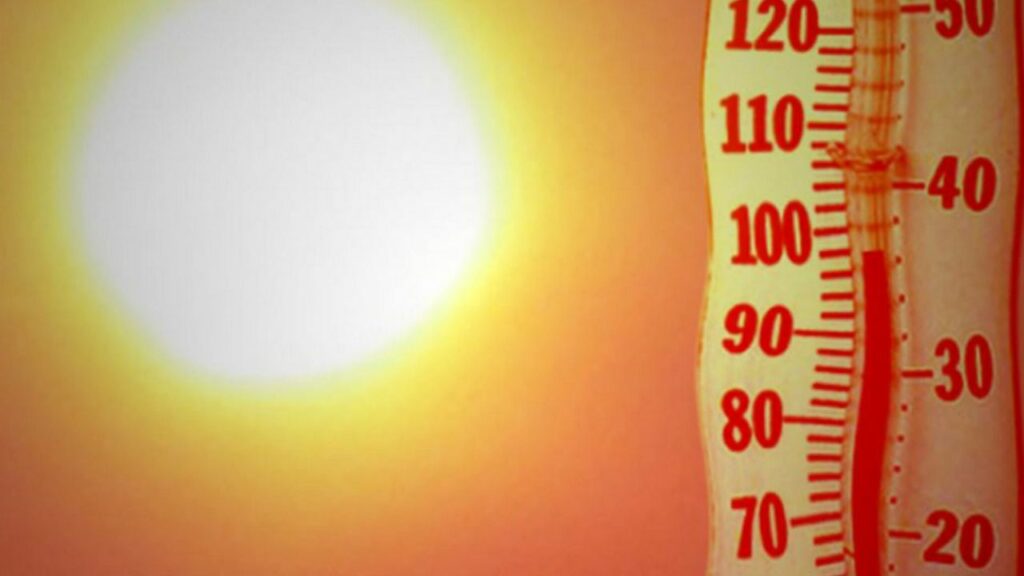Yes, sorry, we still are. Because the spurious precision of various measurements and calculations is a major obstacle to clarity on climate. As Roy Spencer just warned, there’s serious reason to think American temperature records are still contaminated by the Urban Heat Island effect even in official records whose adjustments ostensibly screen it out. Which is not just a serious distortion in itself but reminds us that the already imprecise thermometer record is then “adjusted” by complex algorithms before being presented as “the temperature” to, as we pointed out irritably three weeks ago, two decimal places over a span of centuries.
It is tempting here to unload on a recent World Meteorological Organization press release claiming “The annual mean global temperature is likely to be at least 1° Celsius above pre-industrial levels (1850-1900) in each of the coming five years (2020-2024) and there is a 20% chance that it will exceed 1.5°C in at least one year” because it’s more razzle-dazzle in which the 20% is worth just as much as the 1.5. Such numbers intimidate the unwary. But they amuse the numerically literate.
For instance NBC reports that the United States National Oceanic and Atmospheric Administration, or NOAA, claims 2020 was in fact the 2nd-hottest year, with an average of 58.77°F being just 0.04°F below 2016 not tied with it. But NOAA adds that 2020 was the hottest ever in the Northern Hemisphere, beating the 20th-century average by 2.3°F. And once again one must beware the hypnotic effect of the pseudo-precision.
Since 2.3°F is 1.28°C, this story claims the Northern Hemisphere temperature in 2020 was 1.28°C greater than the global 20th century average. But a few weeks ago we were told that the global temperature in 2020 was 1.25 C greater than the preindustrial average. There's something odd about this claim (besides that “pre-industrial” is remarkably vague, though presumably it doesn’t include say the Cretaceous).
Imagine for a moment that the Northern and Southern Hemisphere temperatures were the same in 2020. In that case the global temperature in 2020 was 1.28°C greater than the global 20th-century average and 1.25°C greater than the preindustrial average, which would mean the 20th century average temperature was 0.03°C lower than the preindustrial average and global warming is a mirage.
Since they cannot be making that claim, how do we line up these obstreperous ducks so that the 20th-century global average is well above the preindustrial average and the Northern Hemisphere average in 2020 is 1.28°C greater than the 20th-century global average? Only by having the Southern Hemisphere be relatively cool in 2020. Cooler, in fact, than the global 20th century average, which they don't mention and which would either put the kibosh on the whole notion of a warming planet or show that Southern Hemisphere temperatures plunged in 2020. (Nor do they mention that, as David Whitehouse observes, if 2020 wasn’t warmer than 2016 globally then there has been no warming for five years, which is not what the stories normally seem to imply or the agencies predicted.)
The decimal razzle-dazzle is also evident if we look at the U.S. record, if record is even the right word. You see, in Spencer’s blog post he looks at the supposed warming trend from 1973 to 2011 in the United States and performs a conceptually simple if technically complex check on it. He compares what temperatures seem to be doing in densely populated areas with what they seem to be doing in sparsely populated ones. And sure enough they diverge: “the highest population density stations had ~0.25 C/decade warming trend, with a reduced warming trend as population density was reduced”. Moreover, rising population density seems to correlate strongly with rising temperatures. Or at least temperature readings.
Spencer then does one of those complicated calculations comparing high and low population density trends and then working backward to conclude that “extrapolating to zero population density would give essentially no warming in the United States during 1973-2011”. (And by wiping out roughly 0.25°C/decade of apparent warming for the past 50 years, would take us back to those notorious pre-industrial measurements to two decimal places.) Despite which official records show overall warming “consistent with the warming in the highest population density locations.”
Spencer is, or claims to be, agnostic about how much actual warming there’s been. But, he insists, there’s something very fishy about the data. As he asks: “How can one explain this result other than, at least for the period 1973-2011, (1) spurious warming occurred at the higher population density stations, and (2) the evidence supports essentially no warming if there were no people (zero population density) to modify the microclimate around thermometer sites?”
Here we note in passing that an additional disturbing feature of the “adjustments” performed by official American agencies committed to the global warming narrative is that they seem invariably to cool the past with the effect of increasing the adjusted warming trend. So when you are shown “the temperature” today and seventy years ago, it ought to come with a warning label that it has been vigorously massaged and may be in some pain as a result.
As we may too. For as Spencer concludes, “It seems to me that there remains considerable uncertainty in just how much the U.S. has warmed in recent decades, even among the established, official, ‘homogenized’ datasets. This has a direct impact on the ‘validation’ of climate models relied upon by the new Biden Administration for establishing energy policy. I would not be surprised if such problems exist in global land temperature datasets in addition to the U.S. I’m not claiming I know how much it has (or hasn’t) warmed. Instead, I’m saying I am still very suspicious of existing official land temperature datasets.”
Since those datasets, especially the American ones, are pretty much the gold standard for historical and current temperature, what do we really know about how warm it was in the past or even how warm it is today?
Well, we know we don’t know it to two decimal places. That’s for sure.



More warming where there are more people is easy to explain. It is the heat island effect.
I've been reading climate science since the 1990s and have never heard pre-industrial described as 1850 to 1900. "Pre-industrial" was described as "1750" a long time ago, and more recently there was no definition, but the 1700s were assumed. Whatever the definition, "pre-industrial" is, for unknown reasons it is considered to be an ideal climate, because any changes from that point are treated as bad news. That bad news claim has never made sense, for two reasons:
(1) The actual global average temperature and CO2 level in the 1700s is just a guess, based on climate proxies -- there were almost no real time temperature measurements, and no real time CO2 measurements, and
(2) People living in the 1700s thought their climate was too cool, and would have loved today's more moderate climate.
You would think 1850 to 1900 would have better measurements than the 1700s, but the global average temperature in that period is a guess too. Pre-1900, there were few land weather stations outside the US, Europe, eastern China and Australia. Far from global coverage. And the sea surface temperature measurements were almost entirely in Northern Hemisphere sea lanes. Far from global coverage. Using buckets and a thermometers -- far from accurate measurements.
So based on rough estimates of the climate in pre-1900, we should be thrilled our planet is slightly warmer. The warming measured by satellites since 1979 shows the most warming was in the northern, colder, half of the Northern Hemisphere, mainly during the six coldest months of the year, and mainly at night. Warmer winter nights in Siberia and Alaska are good news, not a "climate emergency".
The claim that current compilations of the global average temperature (1880 to 2021) have a margin of error of only +/- 0.1 degrees C. is not true. Claiming such accuracy for the 1800s is science fraud.
Claiming the past 45 years of global warming was bad news is a false description of reality. Claiming the next 45 years of global warming will be a "climate emergency" is scaremongering, not logical, and not real science.
The average global circulation model (climate computer game) has predicted double the warming that actually happened, and predicted warming of Antarctica, which has not happened. With such inaccurate climate predictions, it's obvious climate science is not settled.
People with sense should be enjoying the best climate our planet has had since the cold 1600's.
There are plenty of real problems to worry about. How about air pollution over Asian cities? How about one billion people in the world with no electricity?
The "hockey stick" graph was an IPCC fake. If a scientist lies once, he/she can never be trusted again. I cannot believe anything the IPCC says or publishes.
I'm always amazed that any climate scientist would use 'homogenized' or 'adjusted' data sets, or for that matter the complete unadjusted data set, to analyze climate trends. Finding a trend in global climate requires, theoretically, a single completely reliable weather station (a global trend will hit that weather station sooner or later). So if particular data require adjustment then just throw the data out.
Step two would be to eliminate the heat island effect by using only the daily highs.
Seems pretty obvious, but I've never seen it done.